Hypnosis and Pain Reduction - the Latest Research
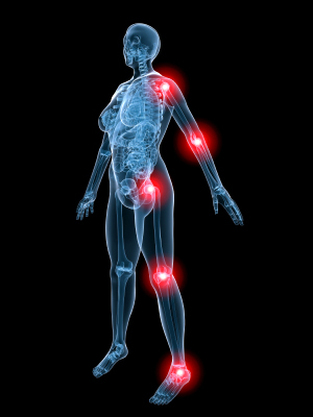
University of Iowa News Release
March 14, 2005
Brain Imaging Studies Investigate Pain Reduction By Hypnosis
Although hypnosis has been shown to reduce pain perception, it is not clear how the technique works. Identifying a sound, scientific explanation for hypnosis' effect might increase acceptance and use of this safe pain-reduction option in clinical settings.
Researchers at the University of Iowa Roy J. and Lucille A. Carver College of Medicine and the Technical University of Aachen, Germany, used functional magnetic resonance imaging (fMRI) to find out if hypnosis alters brain activity in a way that might explain pain reduction. The results are reported in the November-December 2004 issue of Regional Anesthesia and Pain Medicine.
The researchers found that volunteers under hypnosis experienced significant pain reduction in response to painful heat. They also had a distinctly different pattern of brain activity compared to when they were not hypnotized and experienced the painful heat. The changes in brain activity suggest that hypnosis somehow blocks the pain signal from getting to the parts of the brain that perceive pain.
March 14, 2005
Brain Imaging Studies Investigate Pain Reduction By Hypnosis
Although hypnosis has been shown to reduce pain perception, it is not clear how the technique works. Identifying a sound, scientific explanation for hypnosis' effect might increase acceptance and use of this safe pain-reduction option in clinical settings.
Researchers at the University of Iowa Roy J. and Lucille A. Carver College of Medicine and the Technical University of Aachen, Germany, used functional magnetic resonance imaging (fMRI) to find out if hypnosis alters brain activity in a way that might explain pain reduction. The results are reported in the November-December 2004 issue of Regional Anesthesia and Pain Medicine.
The researchers found that volunteers under hypnosis experienced significant pain reduction in response to painful heat. They also had a distinctly different pattern of brain activity compared to when they were not hypnotized and experienced the painful heat. The changes in brain activity suggest that hypnosis somehow blocks the pain signal from getting to the parts of the brain that perceive pain.
Hypnosis reduces pain signals from the body
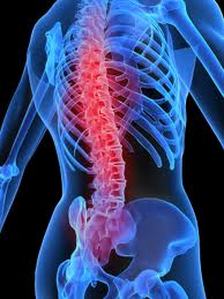
"The major finding from our study, which used fMRI for the first time to investigate brain activity under hypnosis for pain suppression, is that we see reduced activity in areas of the pain network and increased activity in other areas of the brain under hypnosis," said Sebastian Schulz-Stubner, M.D., Ph.D., UI assistant professor (clinical) of anesthesia and first author of the study."The increased activity might be specific for hypnosis or might be non-specific, but it definitely does something to reduce the pain signal input into the cortical structure."
The pain network functions like a relay system with an input pain signal from a peripheral nerve going to the spinal cord where the information is processed and passed on to the brain stem. From there the signal goes to the mid-brain region and finally into the cortical brain region that deals with conscious perception of external stimuli like pain.
The pain network functions like a relay system with an input pain signal from a peripheral nerve going to the spinal cord where the information is processed and passed on to the brain stem. From there the signal goes to the mid-brain region and finally into the cortical brain region that deals with conscious perception of external stimuli like pain.
.

Processing of the pain signal through the lower parts of the pain network looked the same in the brain images for both hypnotized and non-hypnotized trials, but activity in the top level of the network, which would be responsible for"feeling" the pain, was reduced under hypnosis.
Initially, 12 volunteers at the Technical University of Aachen had a heating device placed on their skin to determine the temperature that each volunteer considered painful (8 out of 10 on a 0 to 10 pain scale). The volunteers were then split into two groups. One group was hypnotized, placed in the fMRI machine and their brain activity scanned while the painful thermal stimuli was applied. Then the hypnotic state was broken and a second fMRI scan was performed without hypnosis while the same painful heat was again applied to the volunteer's skin. The second group underwent their first fMRI scan without hypnosis followed by a second scan under hypnosis.
Initially, 12 volunteers at the Technical University of Aachen had a heating device placed on their skin to determine the temperature that each volunteer considered painful (8 out of 10 on a 0 to 10 pain scale). The volunteers were then split into two groups. One group was hypnotized, placed in the fMRI machine and their brain activity scanned while the painful thermal stimuli was applied. Then the hypnotic state was broken and a second fMRI scan was performed without hypnosis while the same painful heat was again applied to the volunteer's skin. The second group underwent their first fMRI scan without hypnosis followed by a second scan under hypnosis.
Hypnosis and Pain Perception
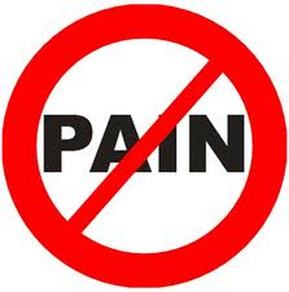
Hypnosis was successful in reducing pain perception for all 12 participants. Hypnotized volunteers reported either no pain or significantly reduced pain (less than 3 on the 0-10 pain scale) in response to the painful heat.
Under hypnosis, fMRI showed that brain activity was reduced in areas of the pain network, including the primary sensory cortex, which is responsible for pain perception.
The imaging studies also showed increased activation in two other brain structures — the left anterior cingulate cortex and the basal ganglia. The researchers speculate that increased activity in these two regions may be part of an inhibition pathway that blocks the pain signal from reaching the higher cortical structures responsible for pain perception. However, Schulz-Stubner noted that more detailed fMRI images are needed to definitively identify the exact areas involved in hypnosis-induced pain reduction, and he hoped that the newer generation of fMRI machines would be capable of providing more answers.
"Imaging studies like this one improve our understanding of what might be going on and help researchers ask even more specific questions aimed at identifying the underlying mechanism," Schulz-Stubner said."It is one piece of the puzzle that moves us a little closer to a final answer for how hypnosis really works.
"More practically, for clinical use, it helps to dispel prejudice about hypnosis as a technique to manage pain because we can show an objective, measurable change in brain activity linked to a reduced perception of pain," he added.
In addition to Schulz-Stubner, the research team included Timo Krings, M.D., Ingo Meister, M.D., Stefen Rex, M.D., Armin Thron, M.D., Ph.D. and Rolf Rossaint, M.D., Ph.D., from the Technical University of Aachen, Germany.
University of Iowa Health Care describes the partnership between the UI Roy J. and Lucille A. Carver College of Medicine and UI Hospitals and Clinics and the patient care, medical education and research programs and services they provide. Visit UI Health Care online at www.uihealthcare.com.
STORY SOURCE: University of Iowa Health Science Relations, 5135 Westlawn, Iowa City, Iowa 52242-1178
Under hypnosis, fMRI showed that brain activity was reduced in areas of the pain network, including the primary sensory cortex, which is responsible for pain perception.
The imaging studies also showed increased activation in two other brain structures — the left anterior cingulate cortex and the basal ganglia. The researchers speculate that increased activity in these two regions may be part of an inhibition pathway that blocks the pain signal from reaching the higher cortical structures responsible for pain perception. However, Schulz-Stubner noted that more detailed fMRI images are needed to definitively identify the exact areas involved in hypnosis-induced pain reduction, and he hoped that the newer generation of fMRI machines would be capable of providing more answers.
"Imaging studies like this one improve our understanding of what might be going on and help researchers ask even more specific questions aimed at identifying the underlying mechanism," Schulz-Stubner said."It is one piece of the puzzle that moves us a little closer to a final answer for how hypnosis really works.
"More practically, for clinical use, it helps to dispel prejudice about hypnosis as a technique to manage pain because we can show an objective, measurable change in brain activity linked to a reduced perception of pain," he added.
In addition to Schulz-Stubner, the research team included Timo Krings, M.D., Ingo Meister, M.D., Stefen Rex, M.D., Armin Thron, M.D., Ph.D. and Rolf Rossaint, M.D., Ph.D., from the Technical University of Aachen, Germany.
University of Iowa Health Care describes the partnership between the UI Roy J. and Lucille A. Carver College of Medicine and UI Hospitals and Clinics and the patient care, medical education and research programs and services they provide. Visit UI Health Care online at www.uihealthcare.com.
STORY SOURCE: University of Iowa Health Science Relations, 5135 Westlawn, Iowa City, Iowa 52242-1178
How Effective Hypnosis is for Pain Relief
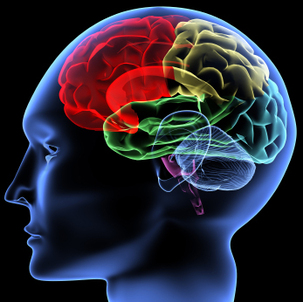
Hypnosis is a state of altered awareness in which we can become absorbed in more relaxing thoughts, ideas, images and feelings, and more easily distracted from negative or painful ones. Many people who benefit from hypnosis respond well to suggestions about feeling less pain, more comfort, increased energy, better sleep, and having rapid healing outcomes. Only about 10-20% of the general population does not receive good results from hypnosis; this group may benefit more from biofeedback and other methods.
There are many published, well-controlled research studies that focus on the use of hypnosis with surgery. In a recent review of 18 of these studies1, the overall result was that most patients treated with hypnosis have moderate to significantly better surgical outcomes including reports of less pain, use of fewer pain medications, and faster recovery. For example, medical hypnosis for orthopedic hand surgery, which is typically very painful, showed benefits that included significantly less post-surgery pain and anxiety, and fewer complications2. In a different study, 339 patients undergoing thyroid and parathyroid neck surgery, were divided into two groups. One group had hypnosis and an intravenous medication that kept them conscious while the other group was given general anesthesia. The hypnosis group had less pain, used fewer pain medications, and had shorter hospital stays3. In a similar study of 241 patients who underwent invasive medical procedures4, those who received pre-surgical instruction in self-hypnosis had less pain and anxiety than those who did not receive self-hypnosis instruction. In summary, a year 2000 review of published articles in the field of hypnosis concluded that "the research to date generally substantiates the claim that hypnotic procedures can ameliorate many psychological and medical conditions."
Hypnosis helps the brain not mind the pain
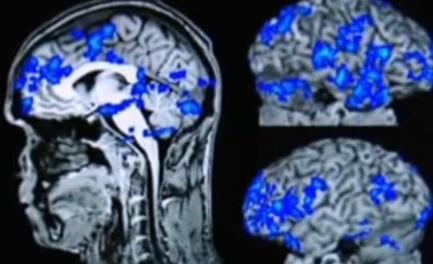
There has also been evidence that hypnosis may affect the way that pain is processed in the brain. In a recent study, volunteers who plunged their hands into hot water were measured by a PET scan.
Later, they were hypnotized and told that the water would not seem as painfully hot. During hypnosis, the PET scan was readministered, showing significantly less activation in the anterior cingulate cortex, the part of the brain that is involved in expanding feelings of emotional distress and can also influence the inhibition of pain.
On the other hand, the PET scan data obtained during hypnosis showed no decrease in activation in the somatosensory cortex region which is involved in processing the sensation of pain.6 These results suggest that even though the brain may continue to register the sensation of pain, hypnosis seems to help patients shift their experience of pain away from distress and suffering.
Hypnotic intervention has also been used successfully with many types of specific pain. In the treatment of burn patients, hypnosis has been used to reduce the pain associated with debridement (the scrubbing away of burned tissue to give new tissue a chance to grow) and wound cleaning, to modulate anxiety related to burn procedures, and to enhance coping styles such as repression and intellectualizing.7 With cancer patients, hypnotic suggestion helps to reduce the suffering related to many painful procedures such as the administration of chemotherapy and treatment-related throat pain and nausea.
Hypnosis can also help to reduce the frequency and intensity of migraine headaches, and to relieve tension headaches8. In the area of dentistry, hypnosis is used to reduce orofacial pain held in the muscles and jaw, and pain, distress, and anxiety related to specific dental procedures such as root canals and extractions. Other significantly effective applications of hypnosis include reduction of anxiety and physical pain related to invasive medical procedures including endoscopies, intubation, catheter discomfort, and blood transfusions.
References
1 Montgomery, G.H., DuHamel, K.N., and Redd, W.N. (2000). A meta-analysis of hypnotic analgesia: How effective is hypnosis? International Journal of Clinical and Experimental Hypnosis, 48, 138-153.
2 Mauer, M.G., Burnett, K.F., Ouellette, E.A., Ironson, G.H., & Dandes, H.M. Medical hypnosis and orthopedic hand surgery: Pain perception, postoperative recovery, and therapeutic comfort. International Journal of Clinical and Experimental Hypnosis, 47, 144-161.
3 Defechereux, T., Meurisse, M., Hamoir, E., Gollogly, L., Joris, J., & Faymonville, M.E. (1999). Hypnoanesthesia for endocrine cervical surgery: A statement of practice. Journal of Alternative and Complementary Medicine, 5, 509-520.
4 Lang, E.V., Benotsch, E.G., Fick, L.J., Lutgendorf, S., Berbaum, M.L., Berbaum, K.S., Logan, H., & Spiegel, D. (2000). Adjunctive non-pharmacological analgesia for invasive medical procedures: A randomized trial.Lancet, 355, 1486-1490.
5 Montgomery, G.H., David, D., Winkel, G., Silverstein, J.H., and Bovbjerg, D.H. The effectiveness of adjunctive hypnosis with surgical patients: A meta-analysis. Anesthesia and Analgesia, 94, 1639-1645.
6 Rainville, P., Duncan, G.H., Price, D.D., Carrier, B., & Bushnell, M.C. Pain affect encoded in human anterior cingulated but not somatosensory cortex.Science, 277, 968-971.
7 Patterson, David. (1996). Burn pain. In Joseph Barber (Ed.), Hypnosis and Suggestion in the Treatment of Pain, pp. 267-302. New York: Norton.
8 Barber, J. (Ed.). (1996). Headache. In J. Barber (Ed.). Hypnosis and Suggestion in the Treatment of Pain, 158-184. New York: Norton.
Tagged as: hypnosis for pain, hypnosis research, pain, pain hypnosis
Later, they were hypnotized and told that the water would not seem as painfully hot. During hypnosis, the PET scan was readministered, showing significantly less activation in the anterior cingulate cortex, the part of the brain that is involved in expanding feelings of emotional distress and can also influence the inhibition of pain.
On the other hand, the PET scan data obtained during hypnosis showed no decrease in activation in the somatosensory cortex region which is involved in processing the sensation of pain.6 These results suggest that even though the brain may continue to register the sensation of pain, hypnosis seems to help patients shift their experience of pain away from distress and suffering.
Hypnotic intervention has also been used successfully with many types of specific pain. In the treatment of burn patients, hypnosis has been used to reduce the pain associated with debridement (the scrubbing away of burned tissue to give new tissue a chance to grow) and wound cleaning, to modulate anxiety related to burn procedures, and to enhance coping styles such as repression and intellectualizing.7 With cancer patients, hypnotic suggestion helps to reduce the suffering related to many painful procedures such as the administration of chemotherapy and treatment-related throat pain and nausea.
Hypnosis can also help to reduce the frequency and intensity of migraine headaches, and to relieve tension headaches8. In the area of dentistry, hypnosis is used to reduce orofacial pain held in the muscles and jaw, and pain, distress, and anxiety related to specific dental procedures such as root canals and extractions. Other significantly effective applications of hypnosis include reduction of anxiety and physical pain related to invasive medical procedures including endoscopies, intubation, catheter discomfort, and blood transfusions.
References
1 Montgomery, G.H., DuHamel, K.N., and Redd, W.N. (2000). A meta-analysis of hypnotic analgesia: How effective is hypnosis? International Journal of Clinical and Experimental Hypnosis, 48, 138-153.
2 Mauer, M.G., Burnett, K.F., Ouellette, E.A., Ironson, G.H., & Dandes, H.M. Medical hypnosis and orthopedic hand surgery: Pain perception, postoperative recovery, and therapeutic comfort. International Journal of Clinical and Experimental Hypnosis, 47, 144-161.
3 Defechereux, T., Meurisse, M., Hamoir, E., Gollogly, L., Joris, J., & Faymonville, M.E. (1999). Hypnoanesthesia for endocrine cervical surgery: A statement of practice. Journal of Alternative and Complementary Medicine, 5, 509-520.
4 Lang, E.V., Benotsch, E.G., Fick, L.J., Lutgendorf, S., Berbaum, M.L., Berbaum, K.S., Logan, H., & Spiegel, D. (2000). Adjunctive non-pharmacological analgesia for invasive medical procedures: A randomized trial.Lancet, 355, 1486-1490.
5 Montgomery, G.H., David, D., Winkel, G., Silverstein, J.H., and Bovbjerg, D.H. The effectiveness of adjunctive hypnosis with surgical patients: A meta-analysis. Anesthesia and Analgesia, 94, 1639-1645.
6 Rainville, P., Duncan, G.H., Price, D.D., Carrier, B., & Bushnell, M.C. Pain affect encoded in human anterior cingulated but not somatosensory cortex.Science, 277, 968-971.
7 Patterson, David. (1996). Burn pain. In Joseph Barber (Ed.), Hypnosis and Suggestion in the Treatment of Pain, pp. 267-302. New York: Norton.
8 Barber, J. (Ed.). (1996). Headache. In J. Barber (Ed.). Hypnosis and Suggestion in the Treatment of Pain, 158-184. New York: Norton.
Tagged as: hypnosis for pain, hypnosis research, pain, pain hypnosis
Hypnosis Relieves Headache Pain
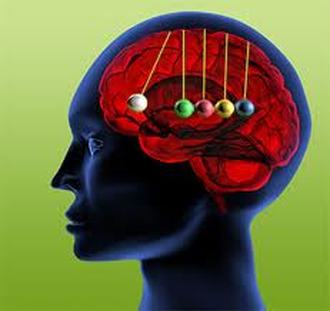
In a study conducted by Anderson (1975), migraine patients treated with hypnosis had a significant reduction in the number of attacks and in their severity compared to a control group who were treated with traditional medications. The difference did not become statistically significant until the second six-month follow-up period. In addition, at the end of one year, the number of patients in the hypnosis group who had experienced no headaches for over three months was significantly higher.
In a controlled trial conducted by Olness (1987), self-hypnosis was shown to be significantly more effective than either propranolol or placebo in reducing the frequency of migraine headaches in children between the ages of six and twelve years of age.
In a research conducted by Schlutter (1980), hypnosis was also found to be effective in dealing with the relief of tension headache.
Alladin (1988) reviewed the literature on hypnosis, identifying fully a dozen different hypnotic techniques that have been used in the treatment of chronic migraine headaches. Of these, hypnotic training emphasizing relaxation, hand warming (which, according to Anderson, 1975) seems the simplest method of establishing increased voluntary control of the sensitive vasomotor system) and direct hypnotic suggestions of symptom removal have all been shown to be effective in reducing the duration, intensity and frequency of migraine attacks during a ten-week treatment course and at thirteen-month follow-up when compared to controls.
In a controlled trial conducted by Olness (1987), self-hypnosis was shown to be significantly more effective than either propranolol or placebo in reducing the frequency of migraine headaches in children between the ages of six and twelve years of age.
In a research conducted by Schlutter (1980), hypnosis was also found to be effective in dealing with the relief of tension headache.
Alladin (1988) reviewed the literature on hypnosis, identifying fully a dozen different hypnotic techniques that have been used in the treatment of chronic migraine headaches. Of these, hypnotic training emphasizing relaxation, hand warming (which, according to Anderson, 1975) seems the simplest method of establishing increased voluntary control of the sensitive vasomotor system) and direct hypnotic suggestions of symptom removal have all been shown to be effective in reducing the duration, intensity and frequency of migraine attacks during a ten-week treatment course and at thirteen-month follow-up when compared to controls.
.

A study (Gutfeld, G. and Rao, L., 1992) was conducted on 42 patients suffering from chronic headaches. These patients, all of whom had responded poorly to conventional treatments, were split into two groups. One received hypnotherapy to relieve their daily headaches; the rest acted as a comparison group. The hypnotherapy group experienced reduced frequency and duration of headaches, cutting the intensity by about 30%. "These results are impressive in such a difficult, hard-to-treat group of patients," commented Egilius Spierings, M.D., Ph.D. director of the headache section, division of neurology at Brigham and Women's Hospital.
BIBLIOGRAPHY
Alladin, A. (1988). "Hypnosis in the Treatment of Severe Chronic Migraine. In M. Heap (ed.), Hypnosis: Current clinical, Experimental and Forensic Practices. London: Croom Helm. pp. 159-166.
Anderson, J.A., Basker, M.A. & Dalton, R. (1975). "Migraine and Hypnotherapy." International Journal of Clinical and Experimental Hypnosis, 23, 48-58.
Gutfeld, G. and Rao, L. (1992). "Use of Hypnosis with Patients Suffering from Chronic Headaches, Seriously Resistant to Other Treatment," As reported inPrevention, 44, 24-25.
Olness, K., MacDonald, J.T. & Uden, D.L. (1987). "Comparison of Self-Hypnosis and Propranolol in the Treatment of Juvenile Classic Migraine." Pediatrics, 79, 593- 597.
Schlutter, L.C., Golden, C.J. & Blume, H.G. (1980). "A Comparison of Treatments for Prefrontal Muscle Contraction Headache." British Journal of Medical Psychology, 53, 47-52.
BIBLIOGRAPHY
Alladin, A. (1988). "Hypnosis in the Treatment of Severe Chronic Migraine. In M. Heap (ed.), Hypnosis: Current clinical, Experimental and Forensic Practices. London: Croom Helm. pp. 159-166.
Anderson, J.A., Basker, M.A. & Dalton, R. (1975). "Migraine and Hypnotherapy." International Journal of Clinical and Experimental Hypnosis, 23, 48-58.
Gutfeld, G. and Rao, L. (1992). "Use of Hypnosis with Patients Suffering from Chronic Headaches, Seriously Resistant to Other Treatment," As reported inPrevention, 44, 24-25.
Olness, K., MacDonald, J.T. & Uden, D.L. (1987). "Comparison of Self-Hypnosis and Propranolol in the Treatment of Juvenile Classic Migraine." Pediatrics, 79, 593- 597.
Schlutter, L.C., Golden, C.J. & Blume, H.G. (1980). "A Comparison of Treatments for Prefrontal Muscle Contraction Headache." British Journal of Medical Psychology, 53, 47-52.